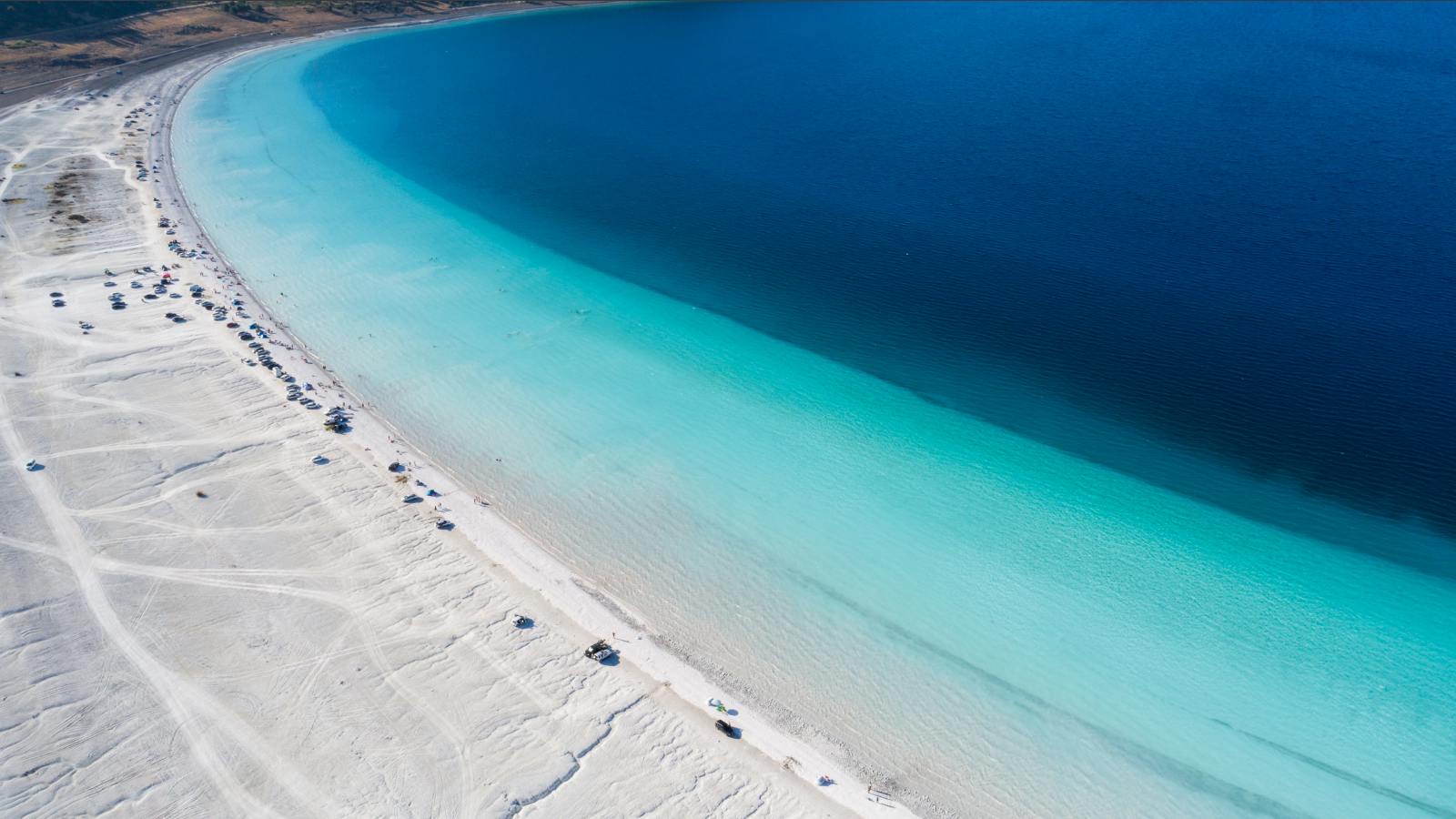QUICK FACTS
Name: Lake Salda
Location: Burdur province, southwestern Turkey
Coordinates: 37.54827653569846, 29.685860347540892
Why it’s incredible: The lake is the only place on Earth that’s similar to Jezero crater on Mars.
Lake Salda is a body of water in Turkey that bears a strong resemblance to Mars’ Jezero crater. The stunning lake is the only place on Earth with geology and mineralogy comparable to those of the ancient impact structure on the Red Planet. This striking similarity meant scientists flocked to study its shores before the Perseverance rover landed on Mars in 2021.
Lake Salda is one of Turkey’s deepest lakes, with a maximum depth of 643 feet (196 meters). Its shores are covered in powdered hydromagnesite, a carbonate mineral that’s rich in magnesium and is found in caves and on the shores of certain lakes. Notably, this mineral holds clues about ancient microbial life.
“Carbonates are important because they are really good at trapping anything that existed within that environment, such as microbes, organics, or certain textures that provide evidence of past microbial life,” Brad Garczynski, a researcher in planetary geology at Western Washington University, told NASA’s Earth Observatory.
Related: NASA Mars rover finds ‘first compelling detection’ of potential fossilized life on the Red Planet
The hydromagnesite on Lake Salda’s shores likely eroded from microbialites, which are rock-like mounds that look similar to coral reefs but are made of microbes. The lake still hosts intact microbialites, but these will eventually be reworked and end up as sand on the shoreline, according to NASA’s Earth Observatory.
Using data from NASA’s Mars Reconnaissance Orbiter, scientists detected similar minerals along Jezero’s western edge in 2019, suggesting the crater once held a lake. These observations have since been confirmed by the Perseverance rover, which found mineral evidence of a lake that existed inside Jezero crater billions of years ago.
Lake Salda and Jezero crater have something else in common: depositional features known as deltas. Deltas are layers of sediment that accumulate in places where rivers flow into lakes and other bodies of water. The features offer tantalizing clues about how water came to fill Jezero, and studying them in Lake Salda has helped scientists narrow down their search to specific locations in the Martian crater.

“One of the great things about visiting Lake Salda is it really gives you a sense of what it would have been like to stand on the shores of ancient Lake Jezero,” Horgan said.
The area around Lake Salda is home to more than 300 plant species and 30 waterfowl species, making it a popular destination for nature enthusiasts and hikers, according to CNN. The lake is only a short drive from the Pamukkale travertines — stunning limestone formations with thermal pools.
Discover more incredible places, where we highlight the fantastic history and science behind some of the most dramatic landscapes on Earth.
